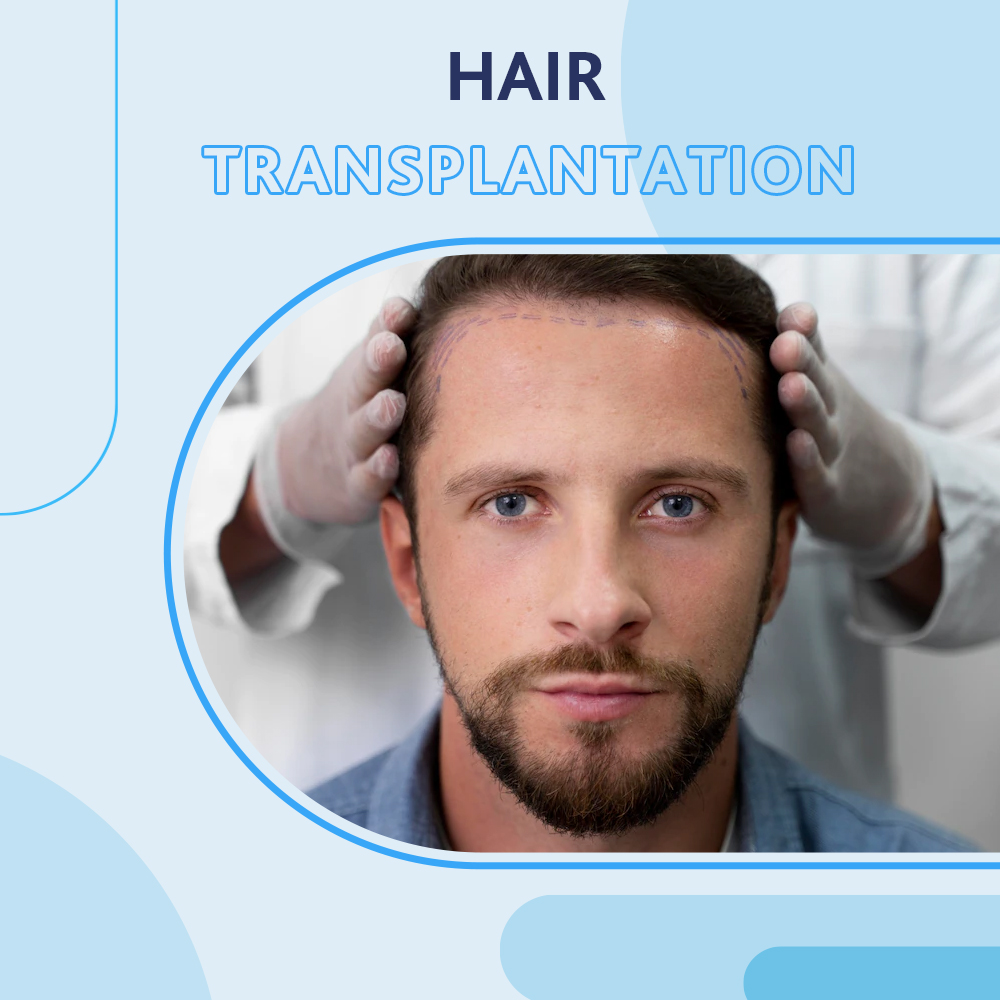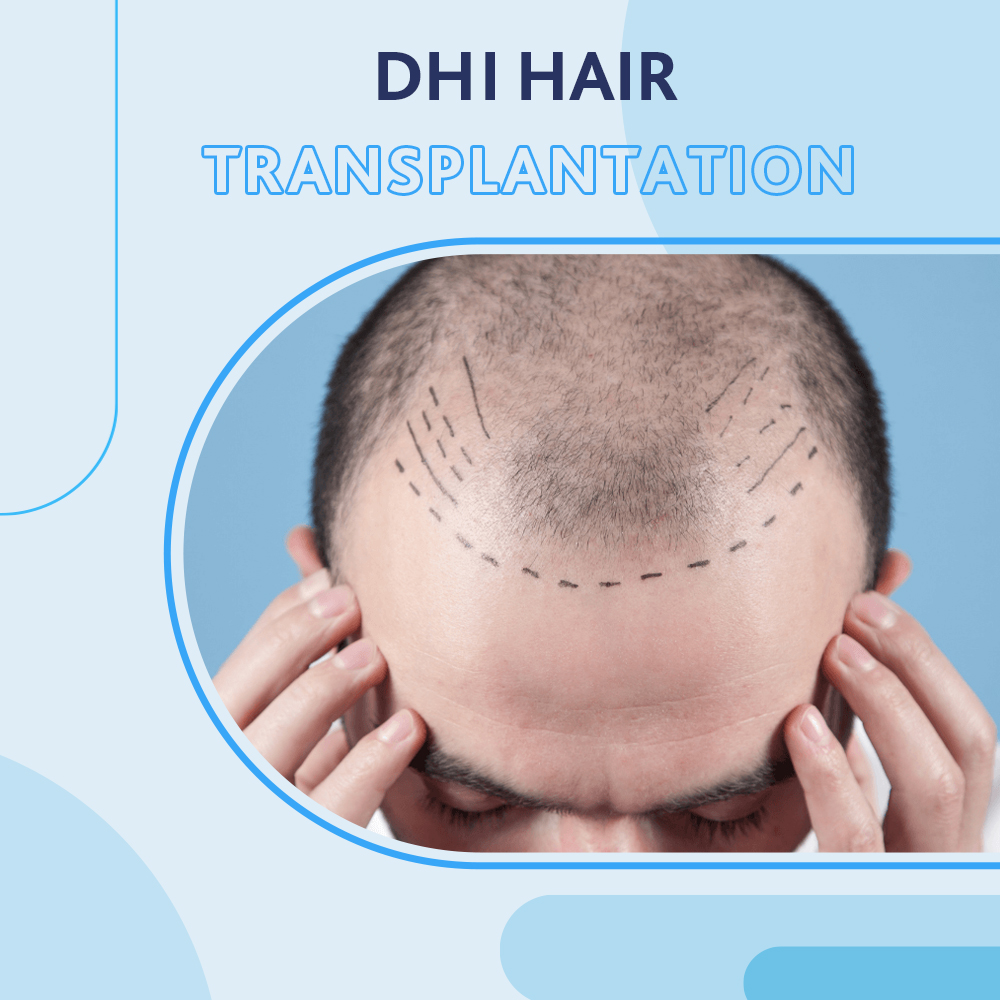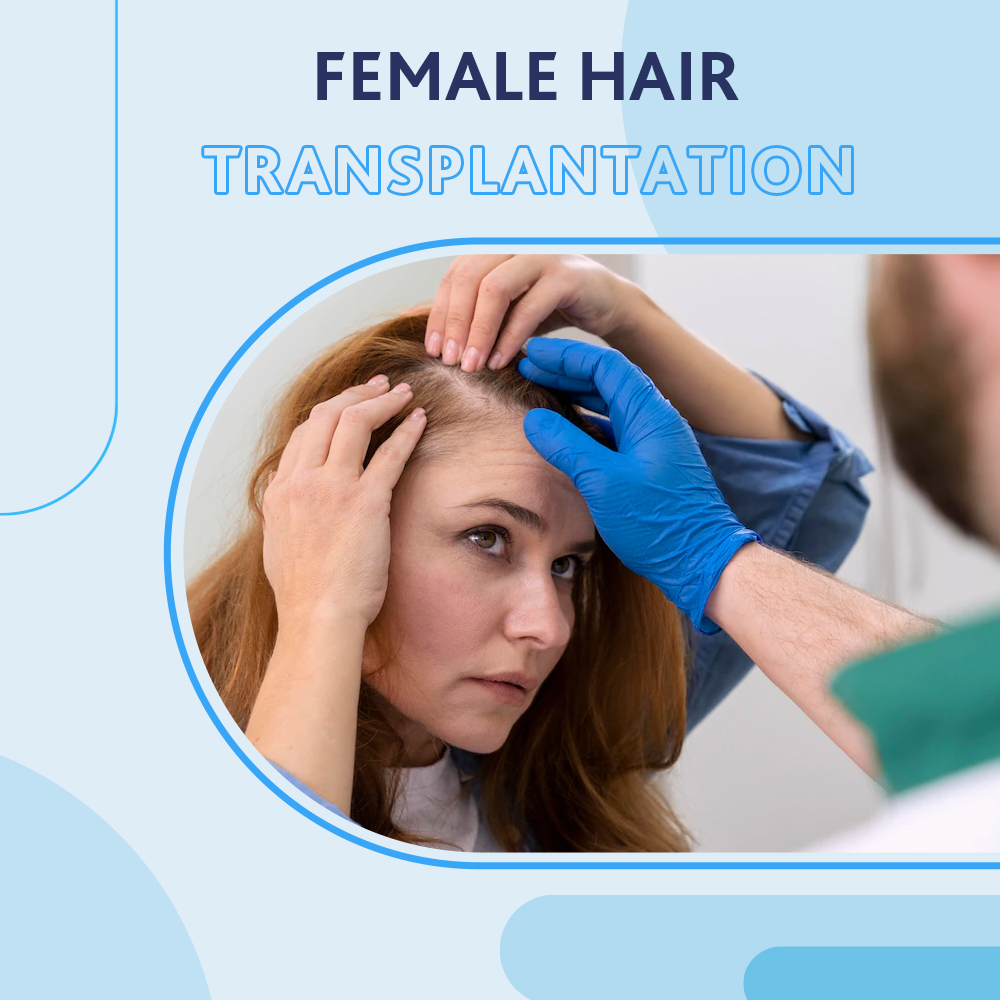Treatments : Hair Transplant for Women
Treatments : Hair Transplant for Women
- Burtom Hair Transplant Center
- Female Hair Transplant
Female Hair Transplant
Before hair transplant in women, the reason and level of hair loss should be identified. An average of 100-150 strands per day is normal for an adult. However, some women might experience extensive hair loss and this might signal a problem. The reasons for hair loss in women are different than men. Therefore, these reasons should be considered in detail.
Why Do Women Experience Hair Loss ?
The hair loss in women is often due to hormones. While 1 out of every 4 women experiences hair loss normally, 1 out of every 2 women experiences hair loss during menopause. DHT (dihydrotestosterone) hormone which is a derivative of the testosterone hormone causes hair loss.
One of the most common problems in women is iron deficiency and anaemia causes hair loss. The body is unable to produce haemoglobin due to iron deficiency. Zinc deficiency can also cause hair loss. Keratin plays an important role in hair growth and repair. The following vitamin values are important for hair health.
- Vitamin A / B3, B7 (Biotin), B9 (Folic Acid), B12 / Vitamin C / Vitamin D/ Vitamin E
Haemoglobin: This helps cell growth in the body and carries oxygen to the blood.
Androgenetic Alopecia is a common problem that can be seen in women after 40 years old. Androgenetic Alopecia is genetic.
This problem is common on the top part of the scalp. This is rather a gradual hair thinning than baldness. It is significant on the top and in front of the hair. The front hairline is preserved. There is slight hair loss in the temporal region but this is less than in men.
Approximately 13% of pre-menopausal women reported androgenetic alopecia symptoms. With that, the prevalence of androgenetic alopecia increases after menopause and 75% of the women can be impacted after 65 years old. An incorrect diet will cause vitamin deficiency and this might cause immune system problems. This will weaken the hair and cause hair loss.
Classification of Female Hair Loss
Type 1
At this stage, hair loss is at a low level. In most women, there is almost no change in the hairline and the hair loss problem is barely noticed. The hair loss will start at the top of the head and in the front sections. But in this type of hair loss, the hair loss occurs around the partition but the bald areas started to become more visible.
Type 2
At this stage, hair loss is considered to be at a normal level. Women might experience hair thinning, volume loss, hair loss and expanding hair loss region at this stage. A hair transplant operation for type 2 classification might be a suitable option depending on the hair loss intensity.
Type 3
This stage is classified as extensive hair loss. The hair is so thin at this stage that the scalp is visible and the bald areas can be seen clearly. At this stage, hair loss might worsen depending on certain factors. These factors are divided into 3 as miniaturing which means loss of health look, excessive thinning and common hair loss.
Is Hair Transplant An Option for Women ? What Is The Success Rate ?
The international studies showed that the success of female hair transplants is lower than males. The reason is although female hair loss is similar to male hair loss, it is completely different. Therefore, women need a special hair transplant operation. If a surgeon experienced with a female hair transplant does the operation, the success rate can reach 99%. At Burtom Center, we have a special team experienced in female hair transplant treatment.
What Are The Differences Between Female and Male Hair Transplant?
- In most cases, women experience hair loss from the front and middle. The hair between two ears often do not fall and there is partial hair loss instead of complete hair loss.
- After a female hair transplant, the first wash is done by the center 3 days after the operation. The patient will wash the hair at home for the next 10 days by following the surgeon’s instructions. There will be shock loss (loss of implanted hair) after 2 weeks. New hair will start to grow 3 months after the operation and the hair becomes denser. At the end of the 8th-12th months, the hair will grow in the densest and voluminous form.
- However, female hair loss might be due to anaemia or goitre disease which is different from men. In these cases, a hair transplant will not provide any benefit before treating the medical problem. The implanted hair will be lost again.
Can You Differentiate Female Hair Transplant After The Operation?
The crusts will fall 10 days after the hair transplant. The redness will be gone between 30-40 days. If you don’t have too light and thin skin, the hair transplant does not show after 2 weeks. But if you have a very light skin tone, the redness in the hair transplant region might take up to 1-2 months.
If the individual has longer hair than 6-7 cm, the donor region will not be visible after the dressing is removed (day 3). The long hair will cover the donor region.
How is Female Hair Transplant Operated?
No-Shave Hair Transplant
The hair is collected by shaving 5-10 cm from the donor region. The hair at the top is not cut and this area is covered. the shaved hair from the donor region is collected and implanted to the bald region in short form (2-3mm).
You can view the No-Shave Hair Transplant page if you want to learn more about no-shave hair transplants.
Long Hair Transplant
The hair isn’t shaved. The donor hair is collected as long hair. This long hair is implanted in the long-form. The individual will see the final result after the transplant.
You can view the Long Hair Transplant page if you want to learn more about long hair transplants.
The operation takes around 7 hours. The hair roots are collected in 3 hours, the channels are opened in 1 hour and the roots are transferred to channels in approximately 3 hours. Of course, this duration can show the difference between individuals. The patient is operated under local anaesthesia without any pain and resting for the first three days is recommended.

Hair Transplantation
Hair transplant operation is an effective and permanent solution for people suffering from androgenetic alopecia, medically known as male pattern hair loss.

Sapphire Fue Transplantation

DHI Hair Transplantation
DHI hair transplantation technique, which can be defined as Direct Hair Implantation, is translated into Turkish as “Direct Hair Transplantation”.

Female Hair Transplantation
Women experience baldness differently than men. However, baldness in women can often be treated with the same techniques and with excellent results.

Beard Transplantation
Before the beard transplant operation, an ideal beard appearance is determined in line with the patient’s nose structure and facial structure.

Eyebrow Transplantation
Micro FUE eyebrow transplantation has become one of the most aesthetic operations for men and especially women in the last ten years.






